DIRK BONNE’S 1:72 scale model
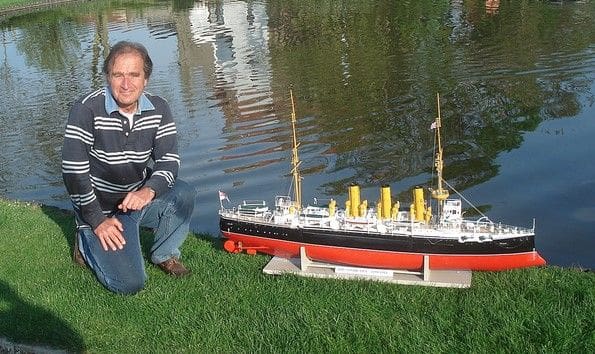
More than fifty years ago when still a little boy, my model making had already started! My father served as a crew member on the Ostend to Dover ferry route and after every voyage he offered me a present, usually a Dinky toy or a small Airfix plane kit in a plastic bag bought from a toy shop in Dover. Ten years ago I decided to surprise him with a scratch built model of the passenger ship Prince Charles, the last steamship of the Ostend to Dover shipping line on which he served for such a long time. The resulting model was actually very good to my eyes, so that was the start of a new hobby and many more model ships followed, including several from Deans Marine warship kits alternated with scratch built models, some of which were for static display and some radio controlled.
HMS Vindictive – history
Enjoy more Model Boats Magazine reading in the monthly magazine.
Click here to subscribe & save.
This was a second class cruiser of the RN Arrogant class and it played an important role in the raids on Zeebrugge and Ostend during WW1, now almost 100 years ago. This old cruiser built at the end of the 19th Century, first landed British soldiers on the Mole of Zeebrugge Harbour whilst under heavy fire. The soldier’s task was to eliminate German artillery so that three block ships could then blockade the harbour entrance ensuring U-boats could not enter or exit the port.
A few weeks later on the 10th June 1918, the now severely damaged ship had her final task when she was transformed into a block ship filled with 200 tons of cement (when flooded this would become solid and heavy), to obstruct the Ostend harbour’s entrance for the same purpose. Unfortunately the raid failed, as the ship didn’t sink in her planned position, so the harbour entrance remained open.
The 2013 monument
In 2013, the remaining piece of HMS Vindictive’s bow was restored and placed near where the ship sank 100 years ago, Photo 1. There was a memorial service with relatives of the original crew, the King of Belgium, the British Ambassador, various celebrities and naval marines as in Photo 2.
The model
The plans of this warship were obtained from British National Maritime Museum. The first model was constructed to 1:96 scale and painted in standard WW1 grey, Photo 3. I am a member of the Model Yacht Club Noord Zee Oostende (MYCNZO), a club which concentrates on true scale model boat building, so decided to build another to 1:72 scale, but to be painted in Victorian naval livery as you can see from these pictures.
Hull
Balsawood bulkheads and wood planks were the basis of the hull, Photo 4, and Photo 5 is also a bow view of the partly planked hull. After rubbing down and filling where necessary, it was then finished with epoxy coat, Photo 6. The most difficult task was to smooth the hull’s exterior and a power sander was a big help, but I recommend doing this work outside and not in a garage, where clean laundry was waiting to be ironed to my domestic misfortune, as the whole place was then covered with a fine coating of epoxy dust and my wife was not best pleased!
Photo 7 shows the hull at a later date, painted and revealing its huge internal volume.
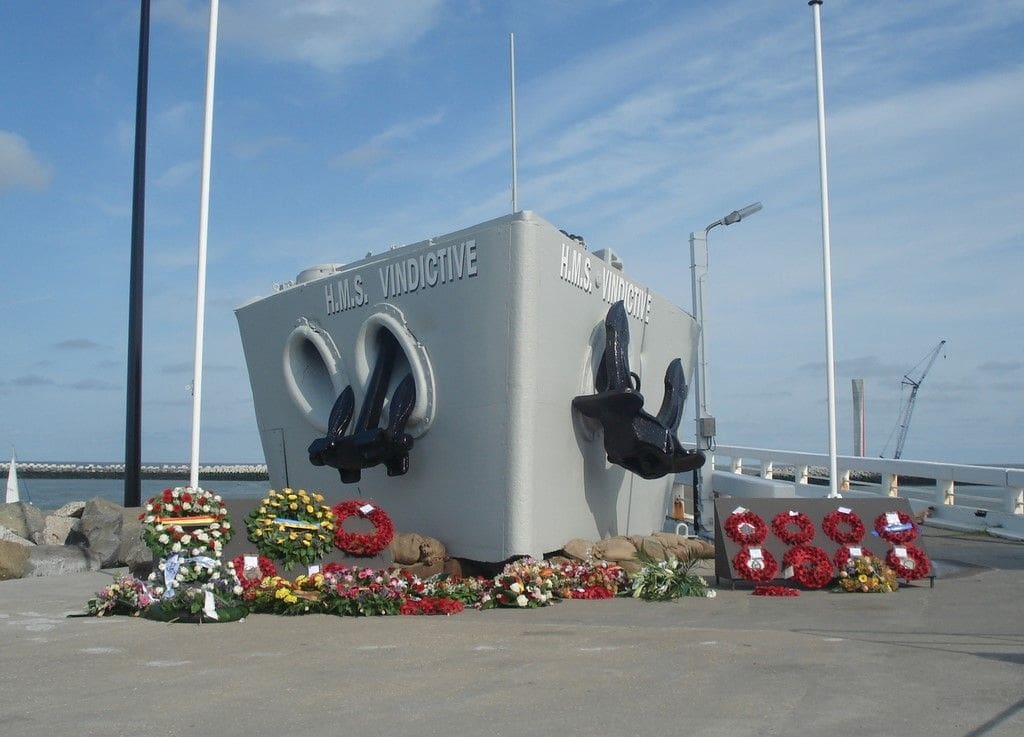
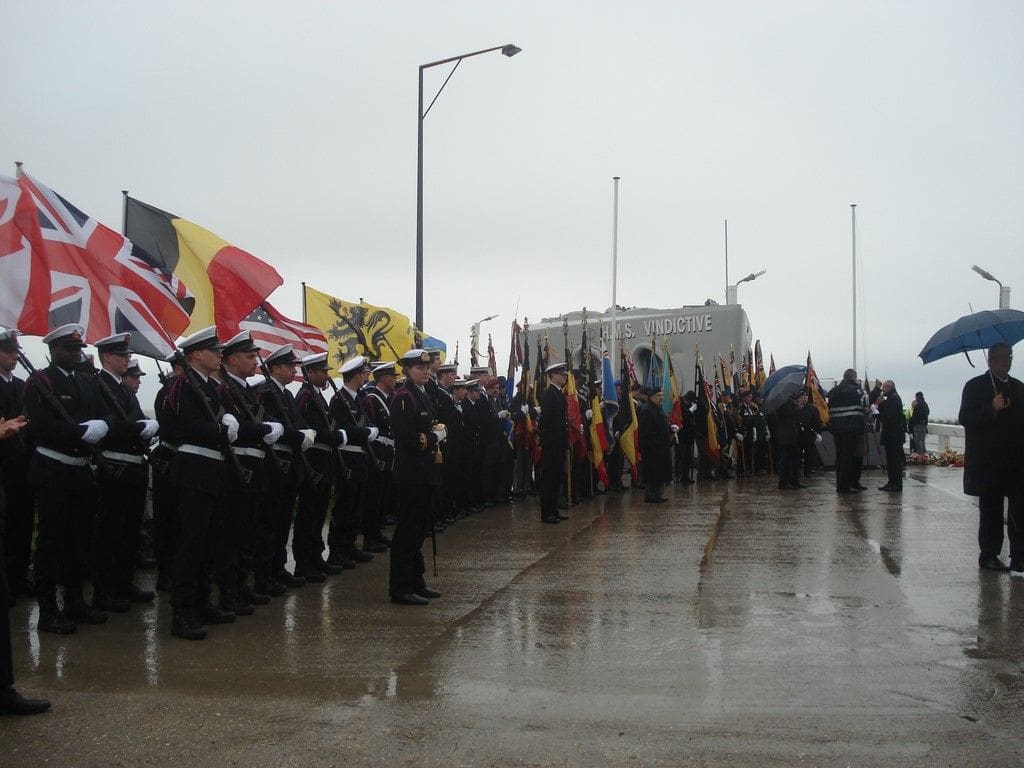
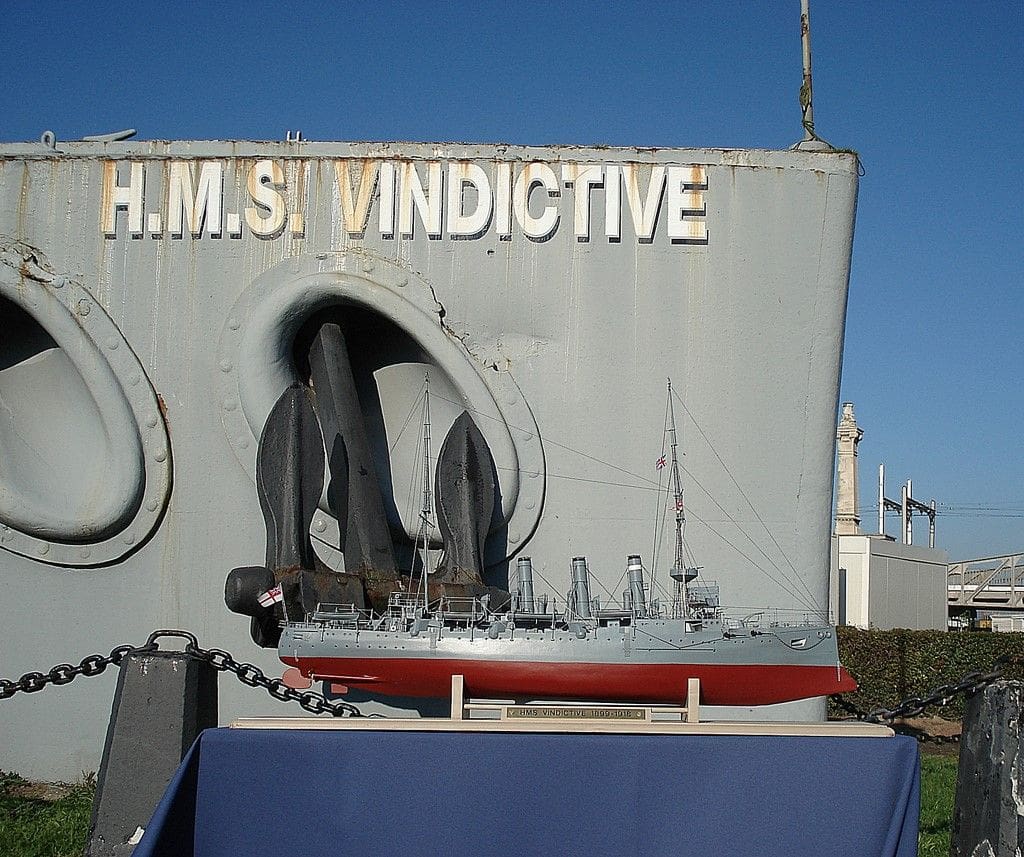
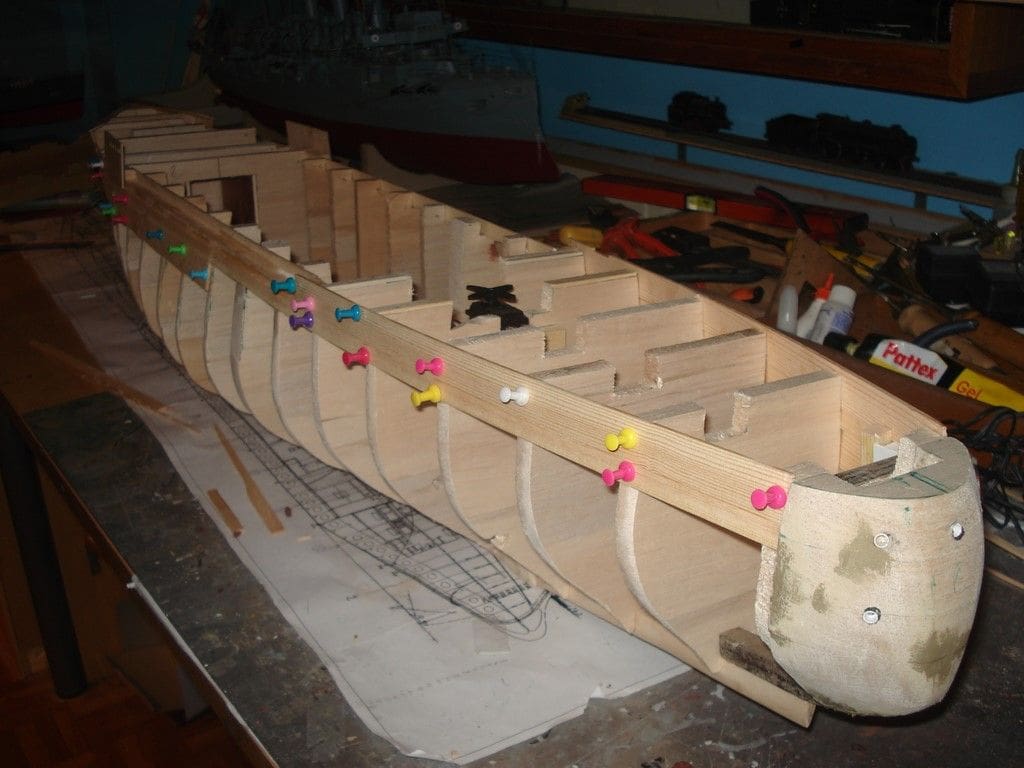
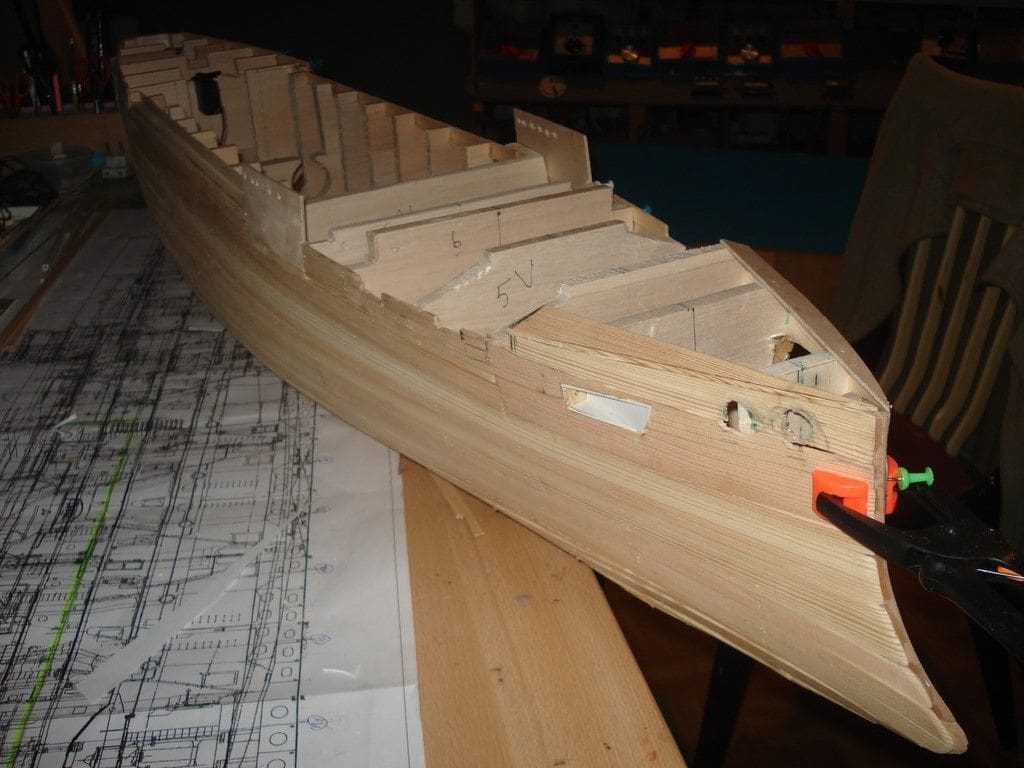
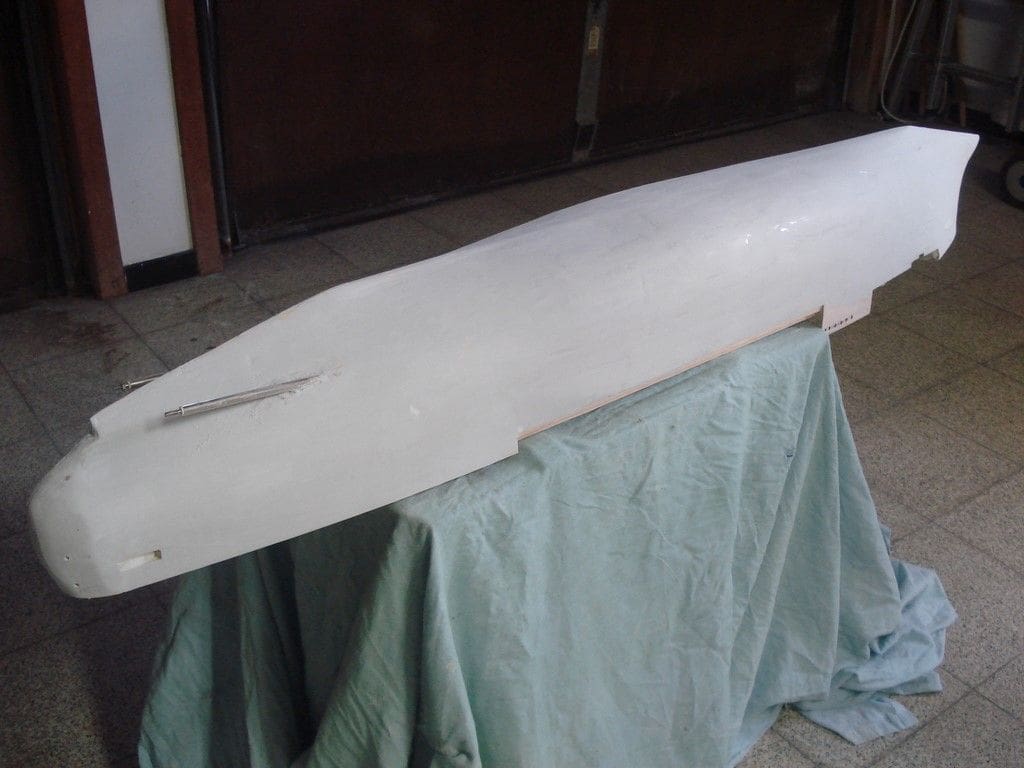
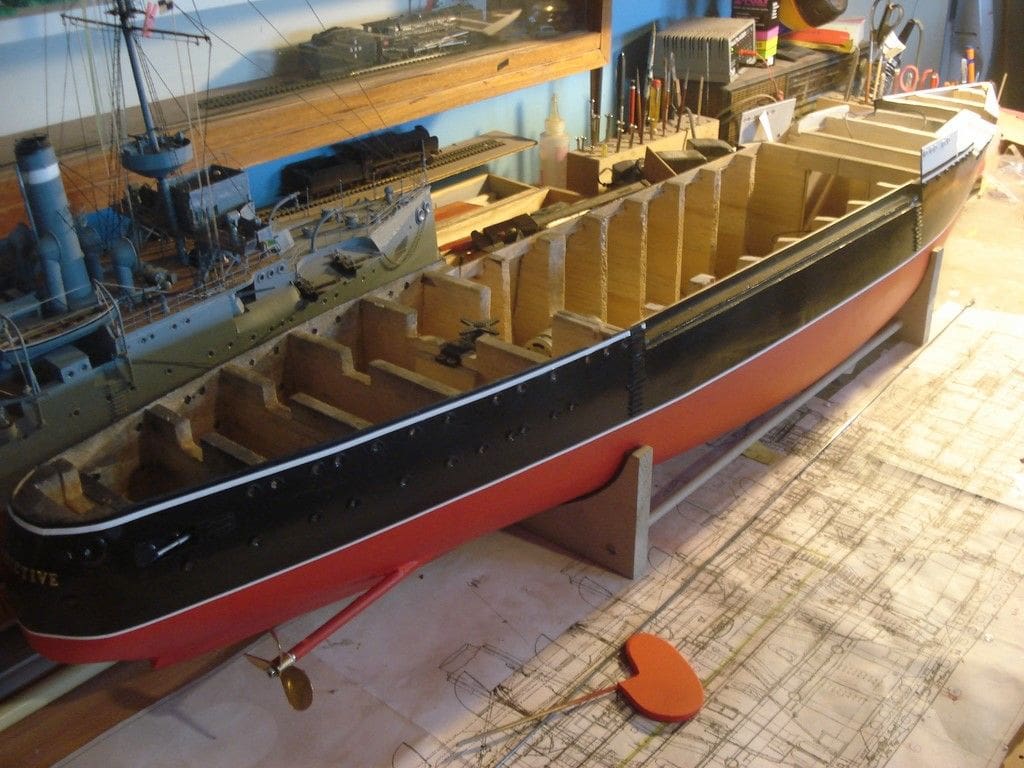
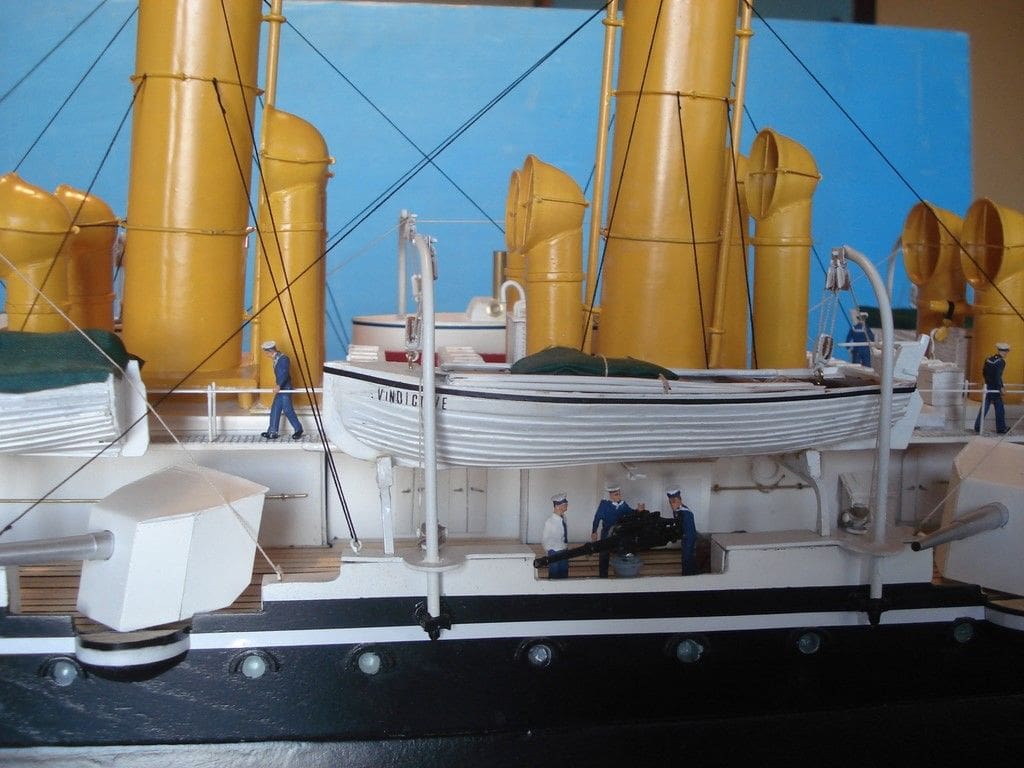
Superstructure
Unashamedly, I use commercial fittings if they are appropriate and Aeronaut, Billings, John Haynes, Deans Marine, etc. all had their websites checked for suitable 1:72 scale parts and those that looked right or could be easily converted, were utilised.
Ship’s boats: Most of these were created from shaped balsawood blocks, covered with plastic strips to represent planking and with green tissue covers, Photo 8.
Funnels: Tubing of the right diameter could not be located, so a smaller tube was used, cut to length and built-up with plastic strip and filler. Each funnel has a Seuthe 6v smoke generator (please see Photo 8 again).
Centre deck part: At 1:72 scale, there is a lot of space in the hull to put batteries, motors, lights, r/c equipment etc. and the inevitable removable ballast, as the model has a total weight of 18kg to float on its waterline. Because the upper part of the main superstructure is rather narrow and all the ship’s boats, davits, funnel cable supports, guns, etc. are all around, it can be difficult to insert the removable ballast within (and out of) the hull at the pondside, without damaging anything. So a method of lifting the centre part of the upper deck with the help of a large screw was created and this section can be slid over the hull, Photo 9.
Crew: One of the last jobs was to add humans and Preiser figures were suitably adapted and painted, Photos 10 and 11. These figures come in a range of scales and it is not too difficult to find something suitable, or that can be easily modified, for virtually any model ship project.
The finished model
HMS Vindictive is not a small model by any standards, but at 1:72 scale it is an impressive model both on the stand, Photo 12, and on the water.
On the water
Last but not least were the first proper sea trials, Photo 13, although an initial test was performed earlier in the garden pond. Having a deep draft and displacing 18kg with its large hull, the model sails very well, its two Graupner Speed 700 motors being more than adequate to propel it.
Time to build? This was 18 months of leisure time, and time well spent as far as I am concerned.
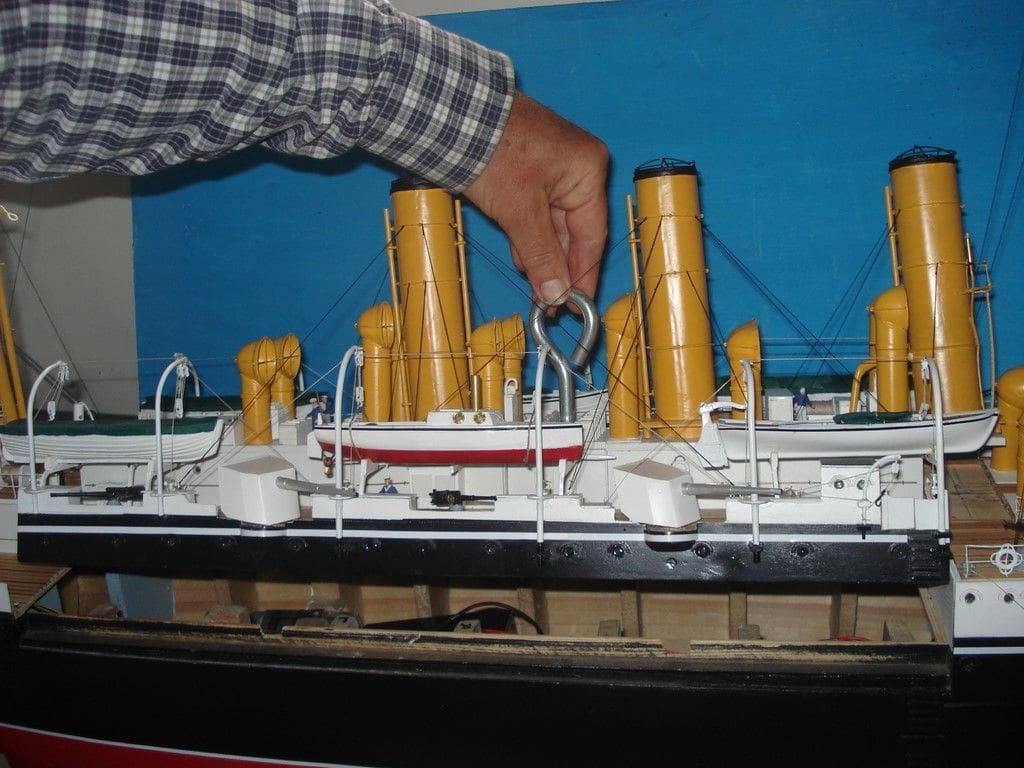
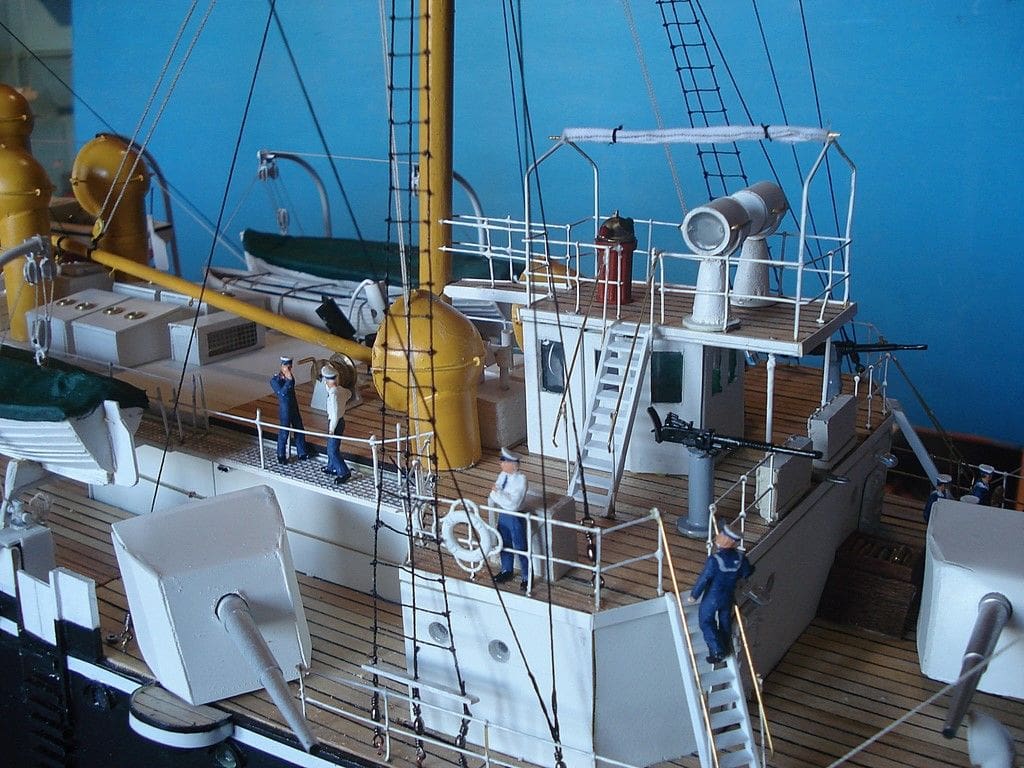
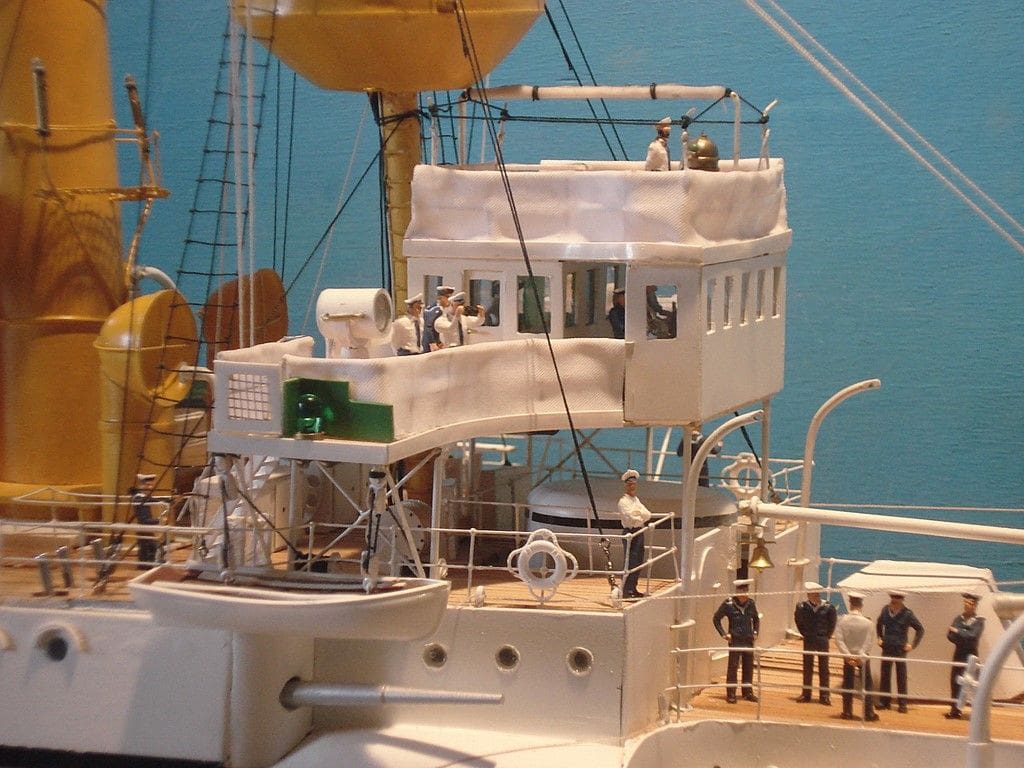
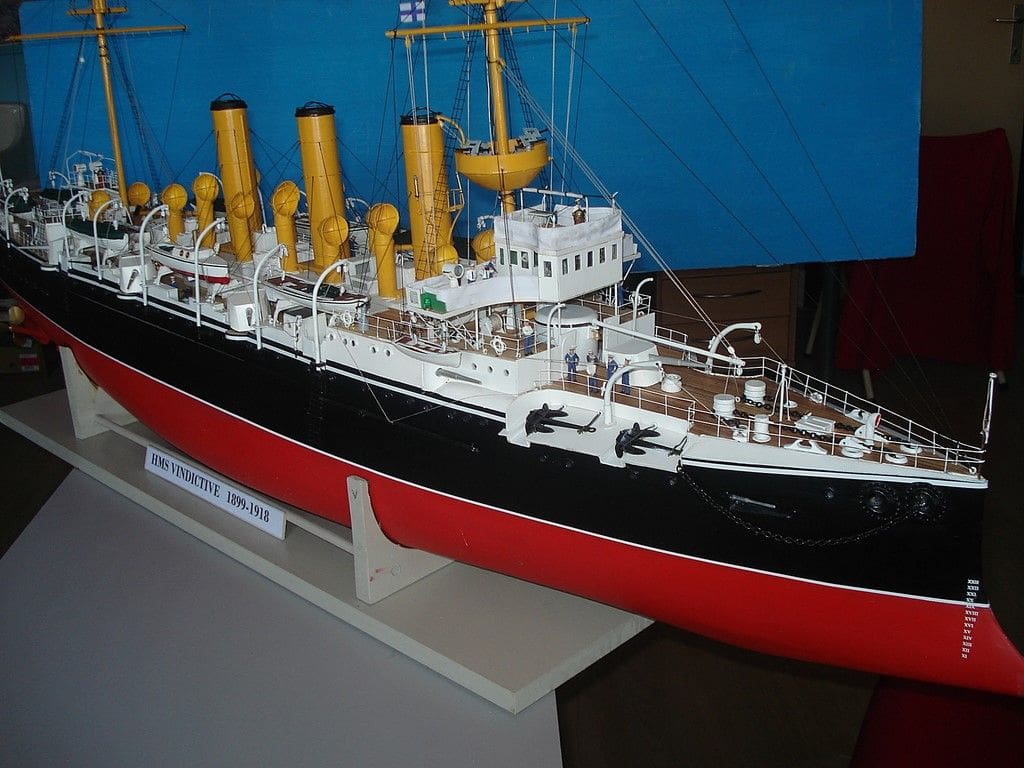
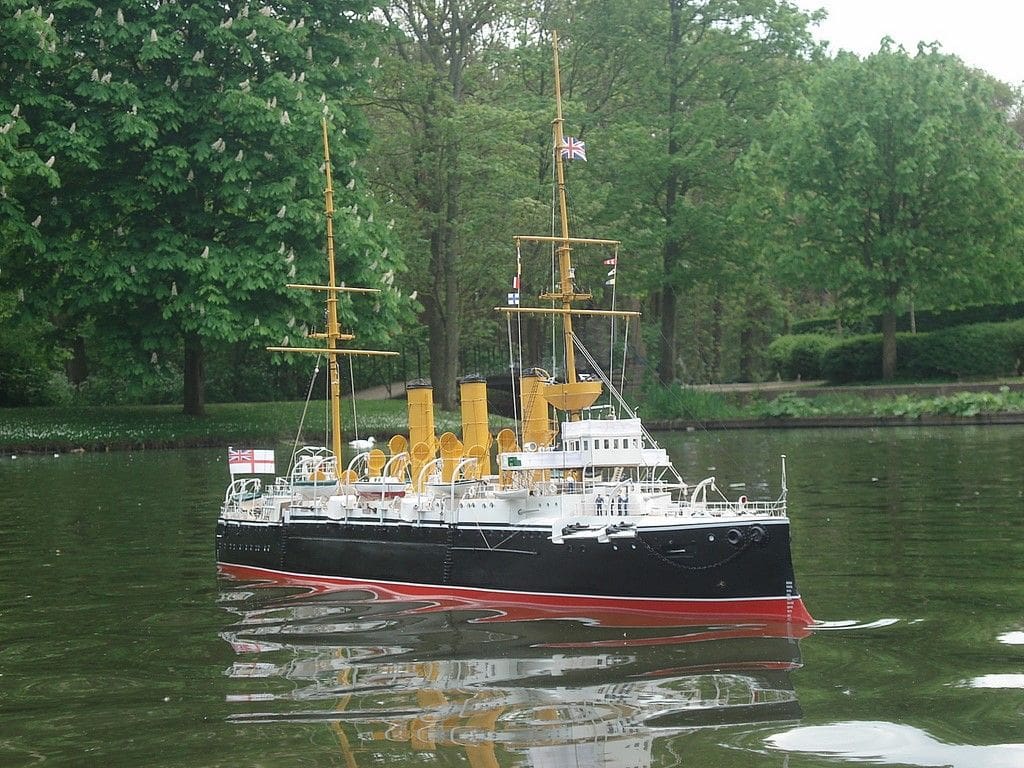
Contact information
Dirk Bonne for more information: bonne.dirk(at)hotmail.com
MYCNZO website: http://mycnzo.yolasite.com/
Presier website: http://www.preiser-figuren.de




